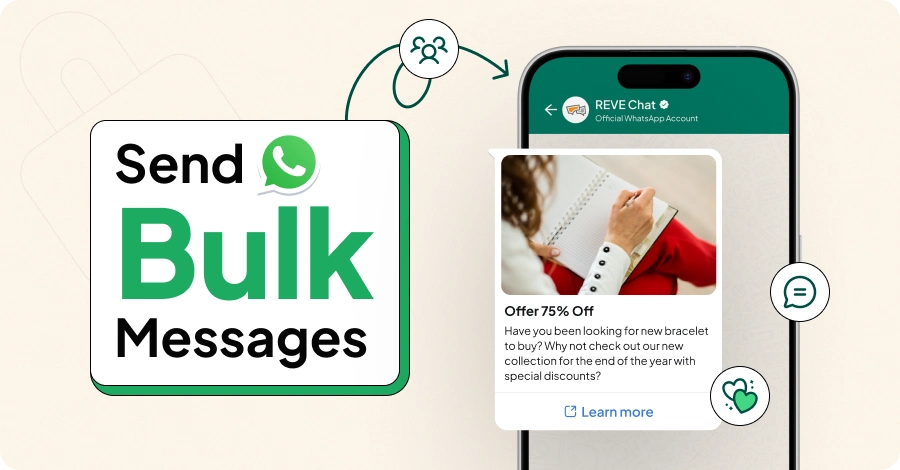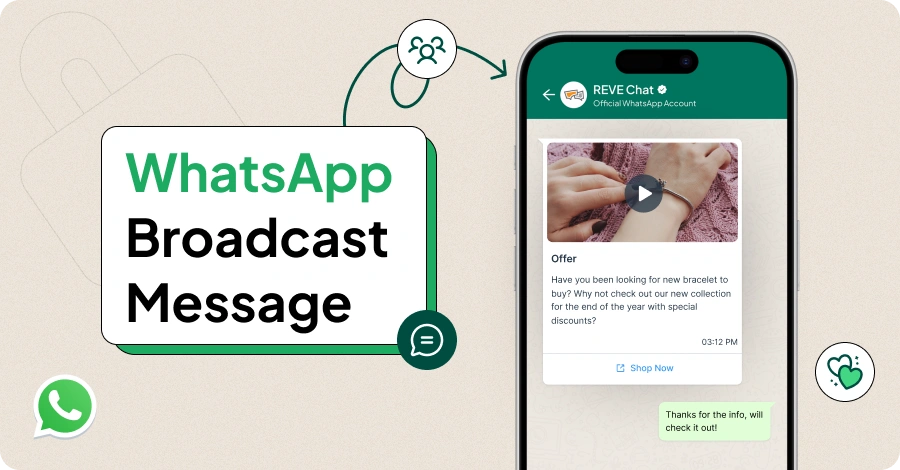Integrated Marketing Communications – A Detailed Analysis
- August 14, 2023
- 14 mins read
- Listen

Customers expect businesses to speak with one voice across all platforms. Be it social media, websites, or ads, they want companies to maintain a consistent brand message everywhere. And if your business conveys a consistent and cohesive message across all channels and touchpoints, it shows your marketing communication is integrated.
For many companies, maintaining an integrated approach to marketing communication is a big challenge as there are so many channels and mediums around. This stops them from delivering a unified brand image, leading to negative perceptions in the eyes of customers.
This is where integrated marketing communications can make an impact! It will help your business make the messages consistent and synchronized across different channels so that customers have a more enriching interaction with the brand.
In this blog, we will explore integrated marketing communications (IMC) in detail, and understand its key elements, importance & benefits. We will also analyze how IMC is different from traditional advertising, and learn how to build an integrated marketing communication plan.
But first, let’s get started with understanding what IMC stands for…
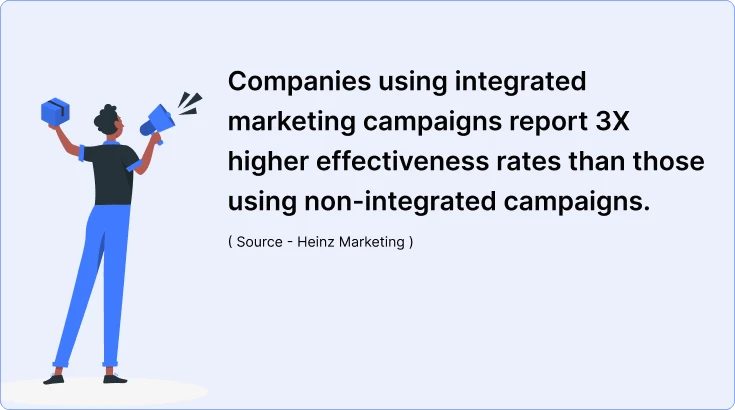
What is Integrated Marketing Communications?
As per the American Marketing Association, integrated marketing communications (IMC) is…” a planning process designed to assure that all brand contacts received by a customer or prospect for a product, service, or organization are relevant to that person and consistent over time.”
In other words, IMC also stands for –
- A strategic alignment of all the different ways a business communicates with its audience
- The coordination and integration of various communication channels to convey a coherent and consistent message to the audience
- The harmonizing of all aspects of marketing communication – whether online or offline – to help deliver a seamless experience for customers
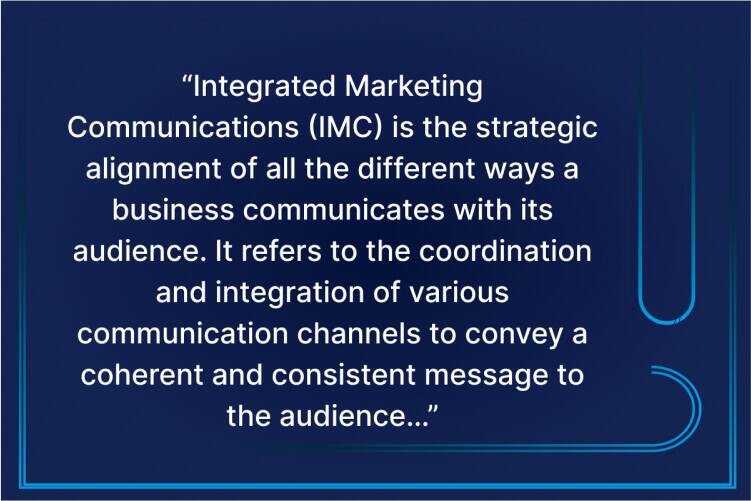
How Is IMC Different from Traditional Advertising?
|
Integrated Marketing Communications (IMC) |
Traditional Advertising |
|
A holistic approach to brand messaging across multiple channels |
Focuses only on single-channel messages |
|
Messaging is consistent across all channels and platforms |
Messaging varies across all channels and can be channel-specific with no consistency |
|
An interactive form of engagement that focuses on two-way communication |
Best fit for one-way communication |
|
Real-time feedback is possible |
Real-time feedback is not possible |
|
Continuous tracking and optimization are possible |
Only post-campaign analysis is possible |
|
Ideal for building a cohesive brand narrative |
Messaging is largely disjointed |
|
Can integrate with other marketing channels and tools |
No integration possible |
Why is Integrated Marketing Communications Important?
1. Builds Brand Recognition and Trust
Integrated marketing communication helps brands reach their intended audiences multiple times, across various channels. Audiences start to notice a brand more when it reaches them quite often. This also boosts trust and recognition of the brand in the eyes of consumers. With an integrated marketing communication strategy, maintaining consistency in communication is easier. The intended message does not translate effectively when consistency is missing from a communication strategy, resulting in disjointed experiences.
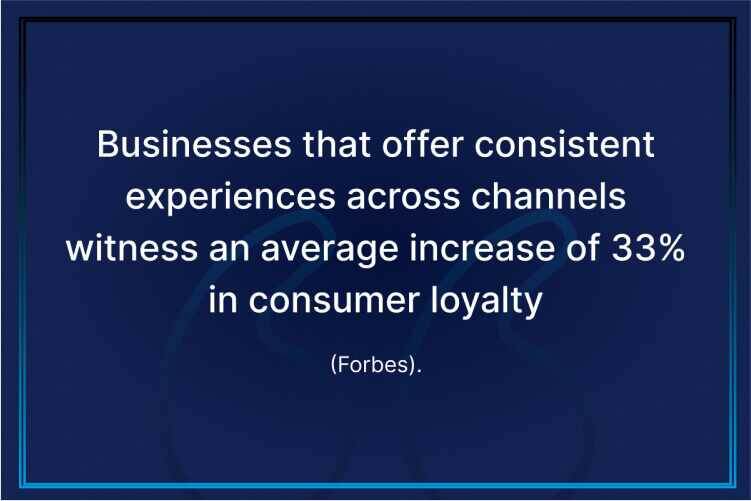
2. Opens the Windows to Larger Audiences
The more channels a company uses for communication, the more people it can reach. Having an integrated marketing communication allows companies to devise a multi-channel marketing campaign and target wider audiences. This approach is also helpful in determining the right channels for reaching the audience with the right messaging.
3. Delivers Higher Revenues
A company that uses various channels to reach wider audiences will connect and engage with more people. This connection and engagement often form the basis of long-term relationships, culminating in revenue growth over time. More importantly, having more channels gives the flexibility to solve problems of more people and this can also translate into revenue growth for the business.
The 5 Elements of Integrated Marketing Communications
Integrated marketing communications is a holistic approach that combines various elements to deliver a consistent brand message. These elements make up the foundation of IMC. A business that strikes a balance between these core elements can make its messaging impactful for the audience.
Here are the 5 key elements of IMC –
- Advertising and Promotion – Advertising and promotion are building blocks of brand visibility. Together, they take messaging to the audience, build interest, and ensure engagement.
- Personal Selling – It lends a human touch to marketing and adds a layer of interactivity to communication. Personal selling can give an opportunity to connect one-on-one with the audience, know their needs, and launch tailored messaging.
- Public Relations (PR) – PR is a great element in building a narrative arc through well-timed and well-placed resources and engagements. It’s a solid tool to shape audience perception and build credibility.
- Direct Marketing – Brands that communicate personally with their audience can enhance the value and relevance of the message, and also gain invaluable insights on consumer behavior and preferences.
- Sales Promotion – Sales promotions have traditionally been a great tool to boost sales volumes and get customer feedback. They can be a big influencer in driving purchase decisions.
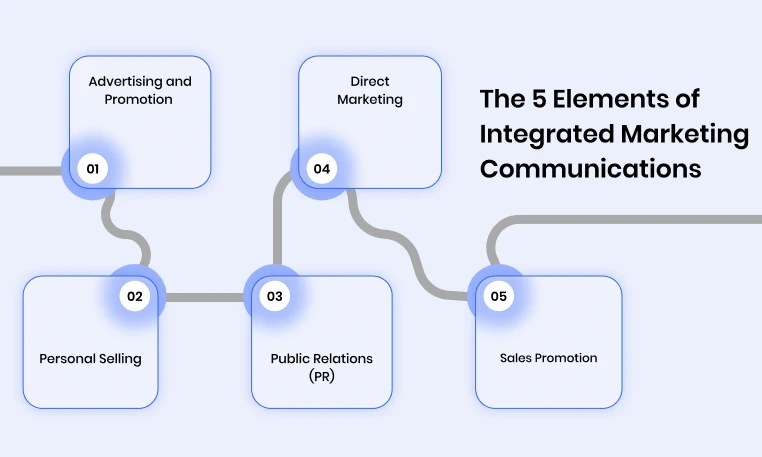
How to Build an Integrated Marketing Campaign?
1. Define Your Campaign Goals
When you build an integrated marketing campaign, you should know the goals you want to achieve. It will offer a clear roadmap and guide your campaign well.
Defining your campaign goals means –
- Be clear about what you want the IMC to help you achieve – whether to drive sales, boost brand awareness, grow website traffic, or improve engagement
- Use the SMART framework to break down your goals into measurable metrics
- Set and define the campaign value proposition that you aim for the audience.
- Set the budget for the campaign
- Continuously track and measure the KPIs of your IMC plan.
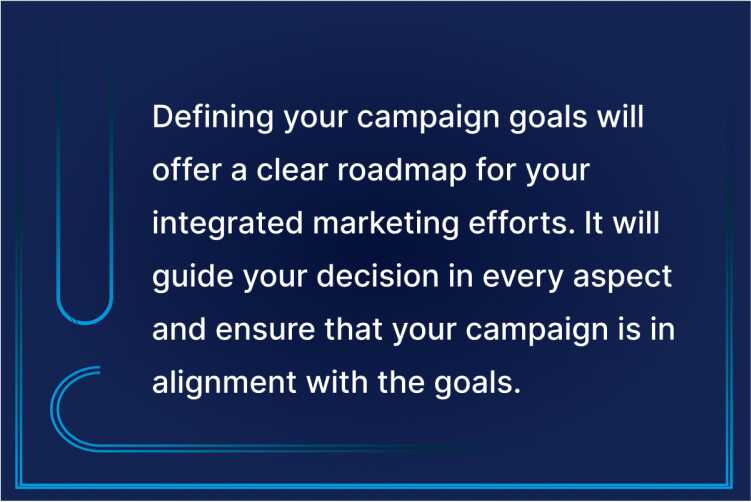
2. Identity Your Target Audience
When you’re building an integrated marketing communication campaign, you should know the audience you target. This will help you with the selection of channels, types of messaging, and tactics to be used. Knowing the audience can help you tailor the campaign to resonate with the people who are most likely to be your potential customers.
To identify your target audience, you need to do these –
- Create a broad profile of your target audience by understanding their basic demographic traits such as age, location, gender, income, and job
- Understand the psychographic factors influencing your audience
- Focus on knowing what motivates your audience, and what are their interests, hobbies, attitudes, and values
- Identify the problems and needs of your audience and see how your products can fit well in solving their pain points.
- Do a competitor analysis to find any segment neglected by others
3. Create a Unified Message
An effective integrated marketing campaign can help you deliver a consistent narrative that resonates with audiences across channels. Not maintaining consistency in the narrative can confuse your audience about your brand’s core values and unique value proposition. This is why you should focus on staying consistent with your brand’s message and let every channel maintain uniformity in messaging.
To create a unified message, you need to consider these –
- Adopt a personalized approach to messaging
- Let your brand campaign speak directly to the aspirations of your target audience
- Use storytelling elements to connect with the audience on a personal level
- Ensure consistency in tone, language, and emphasis of your messages across channels
- Add visual elements to make the messages more memorable for the audience
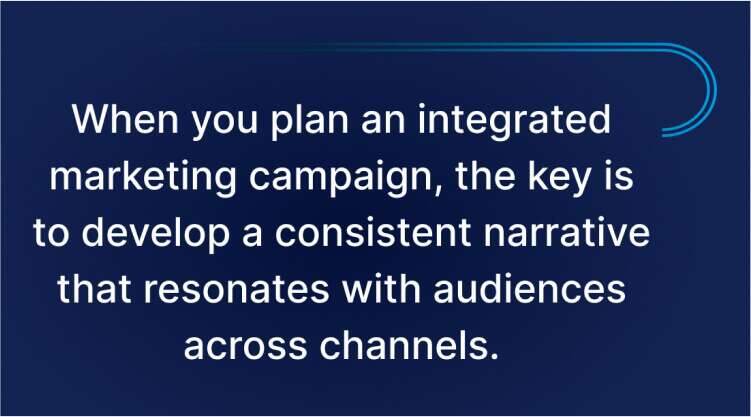
4. Choose Channels and Tactics
You’d surely want a memorable and impactful integrated marketing campaign that engages the audience effectively. However, such campaigns need the support of the right channels and tactics. You also need to have a clear understanding of the audience and their preferred channels to make your IMC impactful.
Key features with choosing channels and tactics –
- Focus on delivering a cohesive brand experience across multiple channels you choose for the campaign
- Analyze each channel thoroughly and include only those in your campaign – whether online or offline – that align with your business goals and audience needs
- Run unified messages across channels regularly.
5. Develop a Robust Content Strategy
More than 70% of marketers use content as part of their marketing strategy. What does that suggest? It suggests that the success of an integrated marketing campaign will depend on the quality of content and creative assets you use.
The content you use will play a big part in how effectively your messages are conveyed to the audience. This is why tailoring the content for each platform is essential. The content should also be aligned with the target audience’s needs.
Key things to consider with content strategy –
- Have a well-defined and 360-degree approach to content strategy
- Plan well on the types of content to create and distribute across channels
- Customize the content for each channel
- Use visual elements more often to grab attention more effectively
- Consider collaborating with influencers for a wider reach of your content
- Use video content more often for solid engagement
- Encourage the audience to share user-generated content
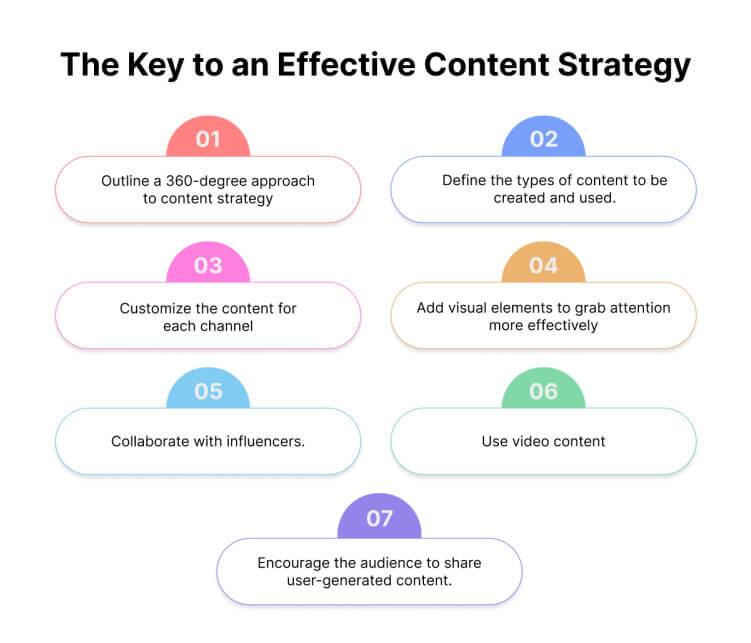
6. Plan the Campaign Schedule
Having a detailed campaign schedule is key to outlining when each element will be executed. A well-planned and well-structured timeline makes it easy to coordinate and launch the campaign at the right time. Such a structured approach will also ensure the tasks are finished on time and the team stays motivated.
Key things to consider with planning the campaign schedule –
- Establish the duration of your marketing campaign
- Set deadlines for specific activities
- Prepare a channel-specific plan with sufficient time for proper execution
- Accommodate “delays and changes” in your campaign plan and build some buffer time
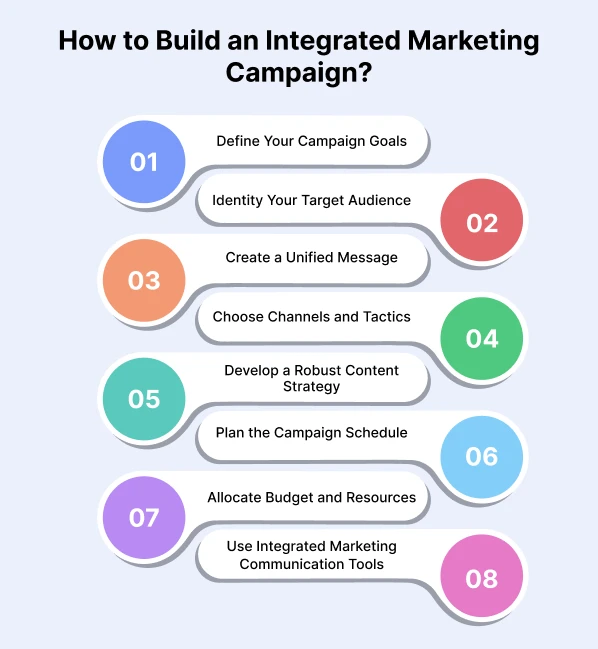
7. Allocate Budget and Resources
Budget and resource allocation is a vital step in building an integrated marketing communication campaign. It is, however, important to have a good understanding of the campaign needs to allocate the budget.
Key considerations with the budget allocation –
- Set a clear and realistic budget for your campaign
- Take into account all the costs with different elements
- Give preference to channels when you allocate the budget
- Have an adequate budget to succeed
8. Use Integrated Marketing Communication Tools
A business that adopts integrated marketing communications (IMC) must use a combination of tools and channels to deliver a unified message to the target audience. The choice of tools will depend on the marketing goals and target audience your business looks to cater to. More so, the integrated marketing communication tools you use should be tailored to the specific goals of your marketing. When you have a well-integrated mix of these tools, you can surely make your marketing communication more effective than ever.
3 Steps to Implementing a Successful Integrated Marketing Communication Strategy
A successful IMC strategy is key to delivering a consistent and impactful brand narrative to your audiences. To build that strategy, you need a methodical process with the right technical support and cross-departmental collaboration.
Here is a 3-step process to implementing an effective IMC strategy for your business –
Step 1 – Conduct a Comprehensive Audit of Your Existing Marketing Strategies
Are your current marketing campaigns effective? Do they provide the results your business needs? Answers to both these questions are essential before you plan any changes to your existing marketing campaigns and tactics. This is where an audit of your ongoing marketing campaigns can help.
When you evaluate your marketing strategies, you will –
- Identify the effective strategies, or those not
- Notice a lack of consistency in messaging across all channels
- Collect feedback from customer service reps and sales teams on the impact of your campaign
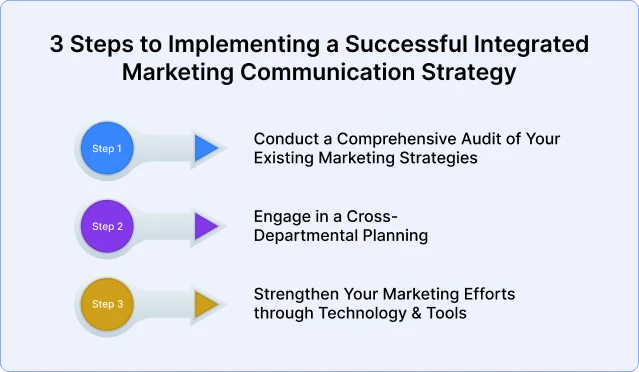
Step 2. Engage in a Cross-Departmental Planning
One team or one department within an organization is not enough to ensure the effectiveness of integrated marketing communications. A business needs active collaboration of various teams to implement the virtues of IMC.
Key things to consider –
- Gather inputs from teams from sales, marketing, product development, and customer service
- Focus more on a holistic strategy by accommodating feedback from different departments
- Create a unified goal by using the outcomes of team feedback
3. Strengthen Your Marketing Efforts through Technology & Tools
Centralized marketing efforts are essential for maintaining consistency in messaging and branding. This however can’t be achieved unless there is an integration between departments through advanced tools and technologies.
Key things to consider –
- Invest in CRM tools and marketing automation platforms
- Train your teams on those tools and technology
- Ensure easy access to these tools for everyone
- Continuously refine the tech and keep it aligned with the business goals and needs
Integrated Marketing Communications Benefits – Key Stats
- Companies using integrated marketing campaigns report 3X higher effectiveness rates than those using non-integrated campaigns. ( Source – Heinz Marketing )
- Purchase intent improves by 90% and brand perception improves by 68% when consumers view consistent messaging across multiple channels. ( Source – Media Post )
- 72% of consumers want to be engaged with an integrated marketing approach, but only 39% are receiving it. ( Source – WordStream.Com)
- 6 out of 10 consumers expect brands to provide the information they need when they need it. ( Think with Google )
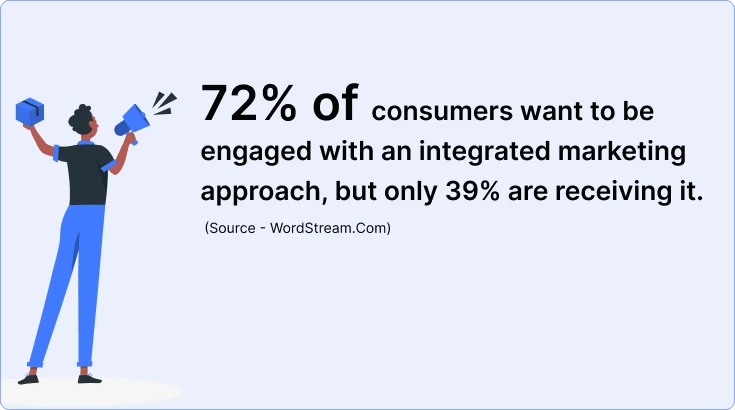
Examples of Integrated Marketing Communications
Nike’s “Just Do It” Campaign
Nike is a great example of how to keep your marketing communications integrated and deliver a seamless experience to customers across channels. The way it maintains consistency with the legendary “Just Do It” slogan and ensures uniformity of messaging across different channels is exemplary. For the slogan campaign, the company consistently uses TV ads, print ads, social media posts, and videos apart from collaborating with influencers. All this helps in the delivery of a cohesive message everywhere.
Apple’s Product Launches
Apple knows how to launch new products and make big announcements in style. Its launch campaigns are famous for their integrated approach. When Apple launches a new product, it creates buzz through teaser videos, online banners, and email campaigns. More so, it live streams the launch event and uses social media to generate excitement. In addition, Apple follows that with ads and blog posts to make sure the message is well-received across multiple touchpoints.
Red Bull’s Extreme Sports Sponsorships
Red Bull is a brand that takes the concept of integrated marketing communications to the next level. Its USP lies in consistently sponsoring extreme sports and adrenaline-pumping events with athletes tied into the marketing strategy. Most of the exciting videos and documentaries they create and share are well-received across social platforms. More so, they keep hosting their own events all through the year with the common theme of energy and adventure being prompted across channels. .
Starbucks’ Rewards Program
No brand can match the creativity and innovativeness of Starbucks when it comes to running reward programs and keeping customers hooked. The company integrates the reward programs across various channels. It keeps sending personalized emails and notifications that inform users about reward points. More so, it regularly does in-store promotions of reward programs and all this helps customers feel engaged and do repeat visits.
Integrate Your Marketing Communications With REVE Chat Tools
Integration is key to achieving the best results with your marketing communications. We, at REVE Chat, understand the importance of supporting your marketing efforts with the right tools and technology and ensuring value for customers at each stage of their journey.
With us, you find a wide range of engagement tools that can add value to various facets of your marketing communication.
Your business can use our AI-powered chatbot to automate various facets of marketing. Further, our video chat software and co-browsing software are very helpful in offering visual engagement which can contribute to the efficiency of your marketing engagement with customers.
We have live chat software that can be added to the chatbot to offer hybrid support and ensure of best experiences for customers across channels.
Final Thoughts
The success of your marketing communication hinges on the efficiency of integration. The more integrated the communication, the better overall marketing impact it will have for your business.
We, at REVE Chat, understand the role of technology in supporting your integrated approach to marketing communication. So, we have a range of useful tools that can add great value to your marketing efforts.
You can sign up and start checking our tools and see how they can contribute to the growth of your business.


